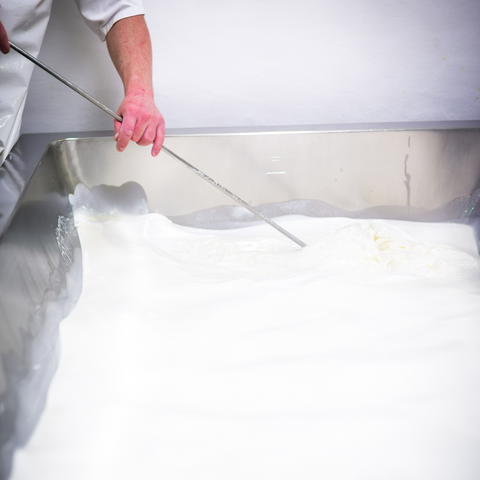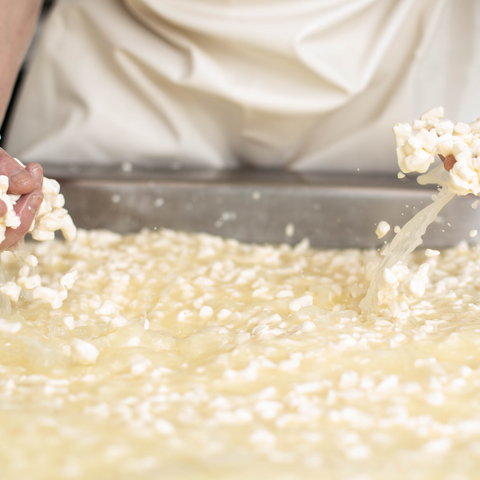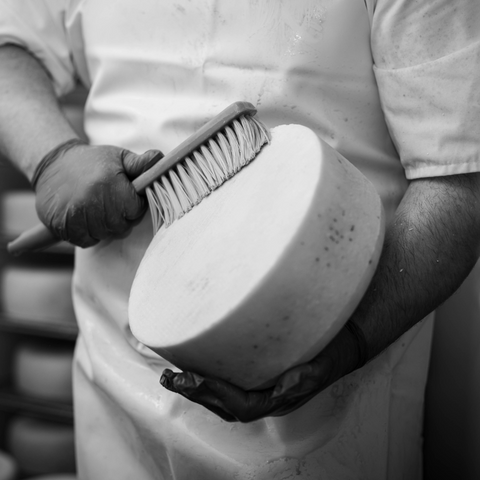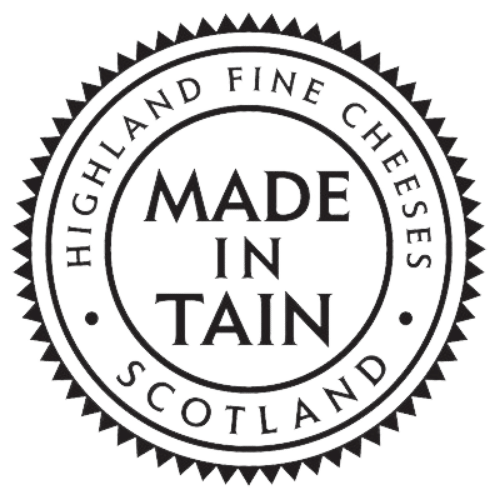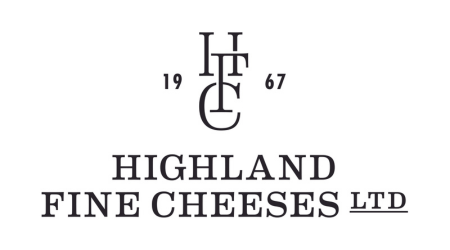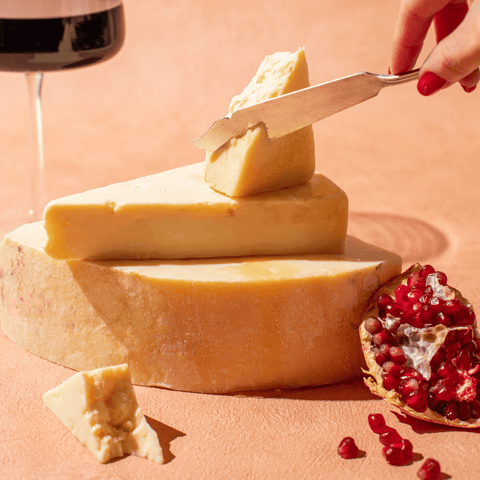

TAIN CHEDDAR
Expiry date: 2025/06/27
The Best Cheddar in Tain
Undisputedly the best in Tain, this Cheddar is perfect with pickle and crusty bread.
You can’t really be a UK cheese maker without an effort at cheddar! This is made with traditional rennet and formed into a barrel which is clothe bound and left for a minimum 9 months to mature. Wholly reliant upon simple Lactococcus cultures with lots of acidity to begin then it takes patience and time to develop. The mark of a good mature cheddar is a long flavour that simply rolls off the tongue with no bitterness at the end – you should still be tasting it five minutes after swallowing!
Nutty and sweet on the palate with a juicy bite and milky texture, this naturally pale Cheddar is cloth bound and traditionally matured for at least a year, giving it a lingering finish punctuated by a hint of fresh sea air.
- Hard
- Creamy
Milk
We ship across the UK each week. Selection of date is available at checkout. We mainly dispatch on a Wednesday for next day delivery via Royal Mail 24hr Tracked Service. Please find full details in our shipping policy - https://hf-cheeses.com/policies/shipping-policy
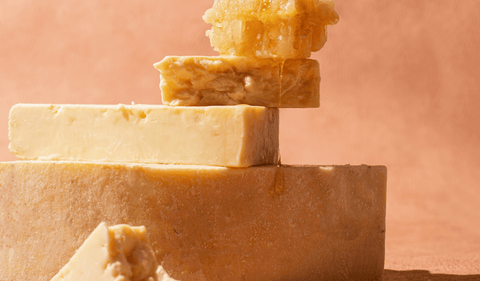
TAIN CHEDDAR
THE MAKING OF TAIN CHEDDAR
Every cheese is crafted in Tain, ScotlandWe collect milk from local farms around Tain. Once the milk is received in our dairy, the milk goes through the pasteurisation process and will then be placed in vats. Cultures are added to begin the process of acidification. After a time, depending on how much acidity is required, rennet is stirred in, and the milk coagulates.
Cutting and Draining the CurdOnce a firm set has been achieved and depending upon how much moisture we wish to retain in any specific cheese style we will cut the curds. As a basic rule the smaller you cut the curd the more moisture you will release, so the curd aim to make cheddar is about the size of a frozen pea at cut whereas a brie’s would be nearer a big sugar lump. The curd is then stirred to help form a skin on each curd particle and to allow the process of syneresis to reduce the gel.
Small pieces of curds will contain less whey and go on to produce a hard cheese like TAIN CHEDDAR
Shaping the cheese – MouldingOnce cut, stirred and drained the curd will be placed into moulds and will continue to acidify and drain but by removing most of the whey you steal the moisture, some warmth and a lot of lactose on which the cultures like to eat and develop, in this way you can stall the process so that you end up with the right moisture, size and texture depending upon cheese style.
Salting and MaturationYou can add salt to cheese in three ways. Salt needs to be added both to flavour and preserve the curd. In cheddar, we add the salt directly to the curd before placing it into moulds to be pressed into a barrel of cheddar.
TAIN CHEDDAR is then cloth bound and matured for a minimum 8 months
